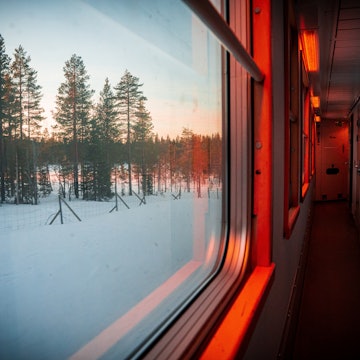

Many of us who enjoy the trail life want to advocate for Mother Nature and environmental conservation – so what are the best ways to be sustainable on a hike, and keep our lands as healthy as possible? Here’s a guide to reducing your physical and metaphorical footprint while you’re out hiking and trekking in the wild.

Go off the beaten path…
Choosing your route is always the most exciting part of planning a hiking or trekking trip. But, as appealing as that popular trek looks on Instagram, it’s worth doing your research about the current level of traffic on a trail you’re considering. Is it suffering from overtourism? Have large crowds damaged the trail or are they affecting the hiking experience? If so, look into some less-traveled options that just may surprise you. Also, check out what the trail’s like during shoulder and off-season; if they are still safe to access, you could have the place all to yourself.
...but stick to the trails
That said, trails exist for a reason. Avoid blazing your own unless given explicit permission to do so by a governing body; keeping human impact to established trails not only preserves the surrounding environment, but it also eliminates the possibility of accidentally trespassing on private lands and lowers risk of injury. The same goes for the places you set up your tent – if a trail is home to established campsites, opt to use them instead of creating your own. All those individually made fire circles and wind shelters can start to add up, disrupting the paths and views that everyone came to enjoy.

Be aware of permits and fire regulations
Many routes, particularly those for through-trekking, require you to obtain a permit before you embark upon your journey; some of the more challenging ones might even require that you check in with the police station before you head out. Similarly, many parks and trails have strict fire regulations, and none of us want to be those campers that accidentally burn down a huge swath of forest. Make sure you are informed of a destination’s hiking, trekking and camping requirements, for your safety and for that of others.
Choose a responsible operator
Embarking on a trek that requires a little help and guidance? Choosing the right operator goes a long way when it comes to sustainability. Before you book, be sure to ask important questions: what steps is the company taking to reduce the impact they’re having on a place? Are they locally owned (thus keeping the money circulating in the local economy)? Are they paying the members of their staff (both guides and porters) fair wages? A good company will be forthcoming about its policies and make you feel comfortable with asking.

Take your trash
This is an obvious one, but also one that’s frequently ignored. When cleaning up your campsite, do a double, no, TRIPLE-check to make sure you’ve grabbed all your waste and packed it up. No one wants to arrive at a campsite to find a bag of someone else’s garbage waiting for them.
Worried about the added weight of packing out your trash? Opt for reducing trash from the outset; bring bulk items in reusable containers, use silicone camping plates, cups and cutlery, and take a handheld water filter from Sawyers or Lifestraw and a reusable drinking vessel instead of plastic bottles.
Bring well-made gear
Well-made hiking and camping gear (backpacks, trekking poles, sleeping bags, etc) will not only save your back during a long day of traversing trails, but it will also mean that fewer things will end up in landfills. Also, try to use gear from a company that has a solid repair policy – sometimes fixes are simple and can extend the life of your gear by years. When appropriate, also consider searching for second-hand or lightly-used products; this will not only keep those items from turning into trash, but they’ll also save you a few bucks. Some high quality brands with good repair policies include Cotopaxi, Osprey and Patagonia, and outfitter REI runs a second-hand program designed to extend gear life and save you some money.

Poop responsibly!
While we’re on the subject of waste management, let’s talk about the least appealing part of trekking and camping: pooping in the great outdoors. When it comes to the inevitable moment that you must consider what you should do with your own excrement, be responsible; packing your waste out is the best bet (biodegradable, odor-neutralizing bags are totally a thing these days, and they can be stuffed in portable “poop tubes” for transport), but if you if you find yourself bag-less, bring along a trowel to bury your waste. The “cathole” should be six to eight inches deep and at least 200 feet from your camp, the trails, and any water sources to avoid contamination. And be sure to take all toilet paper and wipes with you – no hiding it behind bushes!
Support your local parks
Did you enjoy that trek you took last week and have a little extra cash to spare? Consider donating to the body governing the space to help with trail maintenance and preservation. Many state and national parks have options for giving financial support (some even have cash boxes at trailheads); if you’re feeling grateful, drop in a few bucks.
You might also like:
How to be a sustainable scuba diver
Sustainable travel: 6 ways to make a positive impact on your next trip
Responsible trekking in Nepal: tips for minimising your footprint














